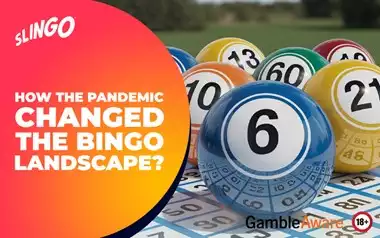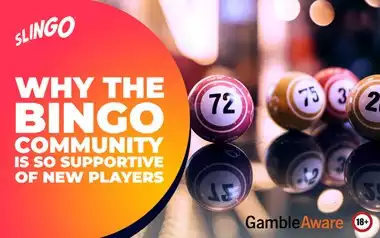At first glance, a symmetrical Plinko board might look like the perfect setup for a fair game. The pegs are evenly spaced, the layout is balanced, and each slot at the bottom seems equally reachable. But the Plinko fairness mechanics go deeper than just visual symmetry.
In this article, we’ll explore why a board that appears fair may still produce unequal outcomes. We’ll also look at how variables like player input, subtle design elements, and randomness play a part in shaping the results. Whether you're playing a classic version or an online Plinko game at Slingo.com, this insight helps uncover what fairness really means in a game of chance.
What Does Fairness Mean in Plinko?
More Than Symmetry
When discussing fairness in Plinko, people often assume that if the board is visually symmetrical and pegs are spaced evenly, the game must be fair. However, fairness in gameplay isn’t just about structure—it’s about how outcomes are generated and whether each result is equally possible under real-world or digital conditions.
This distinction is crucial, especially in digital versions of Plinko. At Slingo, fairness is built into the game through regulated random number generators (RNGs), which ensure that outcomes are not determined by bias or external manipulation. But even in this environment, the perception of fairness can be more complex than it appears.
Understanding the Role of Randomness
The Illusion of Equal Outcomes
Just because a board is designed to distribute outcomes evenly doesn’t mean players will experience them that way. The randomness at the heart of Plinko fairness mechanics means that sequences of results may cluster or repeat without any pattern.
For example, even if each slot has an equal probability of being landed in over the long term, a player might see a streak of outcomes that favour one side of the board. This doesn’t make the system unfair—it’s simply how randomness operates.
Real-World vs. RNG-Based Games
In physical Plinko boards, environmental factors like airflow, surface angle, or even slightly off-centre pegs can affect how the ball travels, creating an uneven distribution of outcomes despite a symmetrical board.
In online games such as those found at Slingo.com, these physical variables are removed. However, outcomes are still governed by RNGs, which simulate randomness through algorithms rather than physical laws. This means fairness is maintained mathematically—but it doesn’t mean every short-term session will look “even.”
How Player Input Affects Perceived Fairness
Input Bias in Physical Games
In physical versions of Plinko, players often favour certain drop points—usually somewhere near the centre or consistently on the same side. This creates an unintentional input bias, where some slots are statistically more likely to be hit simply because they’re targeted more often.
Even if the board is balanced, the behaviour of the player introduces an imbalance in practice. This is one reason why fair-looking boards can produce skewed results.
Digital Drop Points and Randomisation
With online Plinko games at Slingo, RNGs play a central role in maintaining fairness, but the drop point selection still matters from a user experience perspective. While the visuals simulate the ball moving through a grid of pegs, the outcome is decided at the moment of input, based on a random algorithm, not physics.
This removes human input bias from the equation, ensuring a more statistically sound version of the game. However, players might still feel like some outcomes are “favouring” one side, particularly when streaks occur. That’s just the nature of randomness—fair, but not always evenly spread in the short term.
Why Even Distribution Isn’t the Same as Equal Experience
Distribution Doesn’t Always Feel Fair
Fairness in theory doesn’t always translate to fairness in feeling. If a player drops the ball ten times and eight of those land in lower-multiplier slots, it’s easy to think something is off, even when the outcomes are mathematically sound.
The Plinko fairness mechanics aim to balance outcomes over many games, not each session. This is particularly relevant in RNG-based games, where unpredictability is essential to the experience.
Short-Term Clusters and Outcome Variability
In both physical and digital Plinko, it's common to see clustering, where several results fall into the same slot over a short period. While this might seem unfair, it’s actually a normal aspect of randomness. Over hundreds or thousands of plays, outcomes typically even out. But at the moment, the experience may feel skewed.
This is why fairness should always be measured over time, not per session.
Slingo’s Fairness Approach in Online Plinko
Transparent, Audited RNG Systems
All Plinko games hosted on Slingo.com are powered by independently tested RNG software. This ensures that each ball drop outcome is:
- Randomised independently of previous results
- Not influenced by drop timing or player actions
- Compliant with regulatory standards for online games
This digital safeguard replaces the imperfections of real-world boards with controlled fairness, though the outcomes are still as unpredictable as a ball bouncing off triangular pegs.
Visual Fairness vs. Algorithmic Fairness
The games may mimic the look of traditional Plinko, but underneath, it’s all math. Visual animations create the familiar experience of watching the ball bounce through pegs, but the outcome is already determined by the RNG the moment you click "drop."
In other words, the board might look evenly distributed, but the fairness comes from the logic beneath it, not just the design.
Strategy and the Role of Luck
Why Strategy Has Limits
It’s natural to want to find patterns or plinko strategies, but because the outcomes are based on randomness, there’s no system that can consistently predict or improve results. This is true for both physical and online games.
No amount of drop timing or selection will override the unpredictability of the system. As such, strategies should be seen as playful experiments rather than ways to influence results.
Luck is Always the Deciding Factor
At the end of the day, Plinko fairness mechanics are designed around randomness and chance. While visual design and RNG systems ensure balance over time, no drop guarantees a specific result. Wins are never assured—and that’s part of what keeps the game engaging.
Remember: it’s all about luck. Play with that in mind, and you’ll have a more enjoyable and responsible experience.
Conclusion: Fair Doesn’t Always Mean Equal
Plinko may look symmetrical, but fairness isn’t just about what meets the eye. Even distribution doesn’t guarantee fairness because human input, environmental factors, and randomness all introduce variability, whether it’s a peg on a board or a digital animation controlled by code.
At Slingo, our online Plinko games use carefully designed RNG systems to ensure fairness in every drop. Still, remember that wins aren’t guaranteed, and outcomes may not always appear balanced in the short run.
Curious about what makes Plinko tick? Learn more in our complete guide to how Plinko works and see fairness in action.










